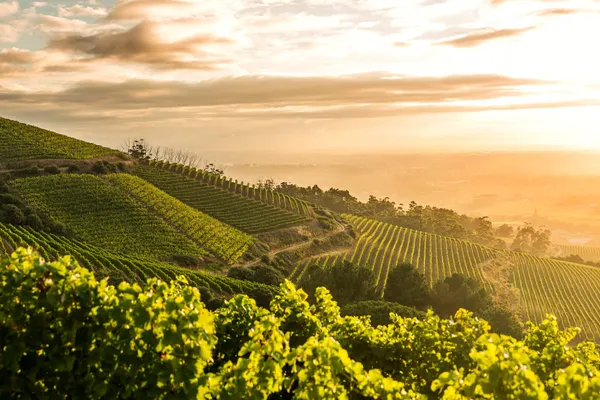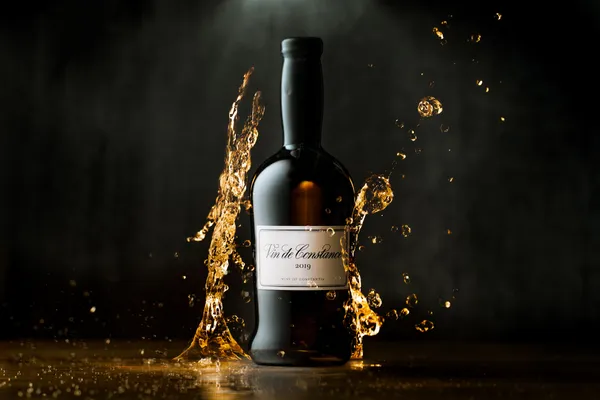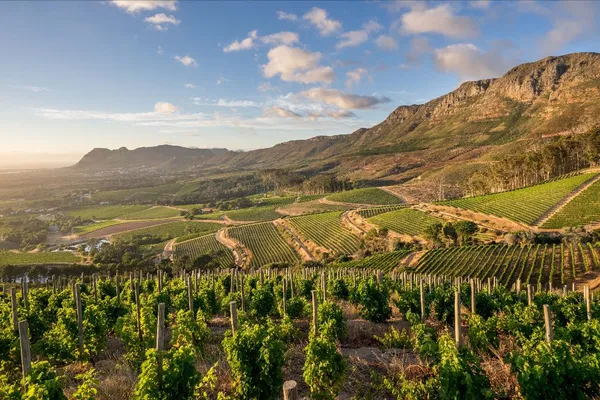Free delivery from Fr. 300 of purchase or 18 bottles, otherwise Fr. 15
With over 320 years of history, Constance wine is without doubt the greatest sweet wine of the southern hemisphere. It made the greatest dreamers, from Napoleon Bonaparte to Baudelaire, including Queen Marie-Antoinette, Louis XVI, Charles Dickens, Alexandre Dumas, George Washington, Nelson Mandela, etc. It has also been served at Buckingham Palace, in some of the world's greatest houses and at some of the most prestigious dinners in history. Produced near the city of Cape Town, it is named after the wife of Governor Simon Van der Stel, the founder of the estate and the inspiration behind the country's wine history. Today it is the pride of Czech businessman Zdenek Bakala and English banker Charles Harman, who bought it in 2011. Their partners include two figures from the wine world: Hubert de Boüard de Laforest (L'Angélus) and Bruno Prats (Chriseya).
The vines of Muscat de Frontignan, the ultimate grape variety and master of Constance wine, are spread over 16.5 hectares on the slopes of the Constantiaberg mountain. The 600 million year old granite soil, with a high clay content, ensures good irrigation and water retention, and thus a good performance of the vines during hot and dry summers. Located between 35 and 400 m above sea level, the estate is caressed by a constant sea breeze. The vines benefit from a south-east orientation and an oceanic climate due to a double marine influence: the Atlantic Ocean to the west and the Indian Ocean to the east, 10 kilometres away. Summers (November-May) are hot and dry, with a lot of sunshine, but cooled by the Cape Doctor, a wind formed by the Benguela, a current coming from the Antarctic. The freshness of the latter stresses and shapes the vines, which, combined with the sunshine, develops all the personality and uniqueness of this vintage, filling the fruit with aromas and flavours. A climate that makes all the complexity of the best local wines.
As for its elaboration, in the manner of the great Tokaj wines, a first harvest is carried out beforehand in order to constitute a basic, "reserve" wine, with 12.5-13% alcohol content and good acidity. In a second phase, the grapes are harvested in a so-called passerillé style. In fact, unlike the sweet wines of Bordeaux, which are produced using botrytis, the production of Constance wine does not require noble rot but a system of passerillage on the stump. This technique consists of leaving the grapes on the vine to dry in the sun and wind, allowing the berries to wither and concentrate their sugar content. To favour sunshine and windy exposure, a significant amount of leaf thinning is carried out. This system of staggered harvesting ensures a balance where sweetness and freshness are in true symbiosis.
Finally, you should know that Constance is packaged in its iconic bottle, with a unique shape, redesigned by an Italian designer to resemble the original bottle (exhibited in the London Design Museum). The design has even been registered and protected, making it a rare find.
The wines of the domain Klein Constantia :
0 items



